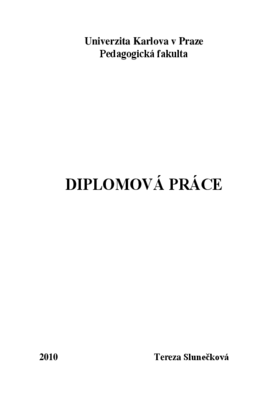Skladba slova a její využití v práci s jazykem - srovnání metody procvičování a objevování ve 4. ročníku ZŠ
Work with word structure and its application to language usage after different methods of education - rehearsal and discovery learning
diplomová práce (OBHÁJENO)

Zobrazit/
Trvalý odkaz
http://hdl.handle.net/20.500.11956/23306Identifikátory
SIS: 88103
Kolekce
- Kvalifikační práce [18095]
Autor
Vedoucí práce
Oponent práce
Rendl, Miroslav
Fakulta / součást
Pedagogická fakulta
Obor
Psychologie a speciální pedagogika
Katedra / ústav / klinika
Katedra psychologie
Datum obhajoby
31. 5. 2010
Nakladatel
Univerzita Karlova, Pedagogická fakultaJazyk
Čeština
Známka
Velmi dobře
Cílem výzkumu bylo zjistit a popsat, jak žáci pracují se skladbou slova a jak tyto poznatky z hlediska jazykového využívají dále (v sémantické aplikaci). A to při srovnání výuky metodou procvičování a objevování ve 4. ročnících základní školy z rozhovorů provedených s žáky. Byly použity tyto metody: rozhovor, analýza produktů. Na základě analýzy výsledků žáků a následných rozhovorů nebyl zjištěn statisticky významný rozdíl mezi experimentálními skupinami. Přesto byly identifikovány možné rozdíly mezi skupinami, a z nich byly naznačeny výhody a nevýhody obou metod při práci se skladbou slova.
This paper refers to memorizing (rote learning) and discovery learning; how pupils from elementary school in 4th grade work with word structure and how they apply it to language usage after being taught by different methods - rehearsal and discovery learning. The subject matter was word structure (word roots, prefixes and suffixes) and deriving different related words. In the main experiment two groups of pupils were taught by different methods; one group was taught by the rehearsal learning method and the other one was taught by the discovery learning method. After that the children were interviewed and according to their statements we can observe their morphological and semantic work.
